10 Facts about the Pantheon
10 Facts about the Pantheon
Even today, almost 2000 years after its construction, the breathtaking pantheon is a remarkable building to see. The spectacular design, proportions, elegance and harmony are a striking reminder of the architecture of the great Roman Empire. When Michelangelo saw this wonder for the first time he said that it looks more like the work of angels, not humans.
1 The word Pantheon is a Greek adjective meaning “honor all Gods”. In fact the pantheon was first built as a temple to all gods.
2 It is the best preserved Ancient Roman monument. It is a bit of a mystery how the Pantheon managed to survive barbarian raids when all the rest of Roman monuments had been shattered. Its turning into a church in 609 AD has a lot to do with it in later time, but also the structure itself is way ahead of its time. In fact, the exact composition of the material is still unknown and appears to be structurally similar to modern day concrete! Whatever the reasons are, the Pantheon is the only structure of its age and size that has successfully survived the damage of time and gravity, still intact with all its splendor and beauty.
3 The exact age of the pantheon remains unknown. The Roman legend tells that the original Pantheon was built on the very site and was dedicated to Romulus, their mythological founder, after he ascended to heaven from that site. Most historians claim that Emperor Augustus right hand, Agrippa, built the first Pantheon in 27 BC. It burned in the great fire of 80 AD, was rebuilt by Emperor Domitian, but was struck by lightning and burned again in 110 AD. The Pantheon as we know it today was built in 120 AD by Emperor Hadrian Who was passionate with architecture and designed it together with Apollodorus of Damascus, a famous Greek architect of the time who unfortunately was executed by order of the Emperor, because of an argument about the design of the temple…
4 The most fascinating part of the Pantheon is its giant dome, with its famous hole in the top (The eye of the Pantheon, or oculus). The dome was the largest in the world for 1300 years and until today it remains the largest unsupported dome in the world! The diameter of the dome is 43.30 meters or 142ft (for comparison, the United States Capitol dome is 96 feet in diameter) and is in perfect proportion with the Pantheon by the fact that the distance from the floor to the top of the dome is exactly equal to its diameter.
The great architectural achievement was due to the massive weight of the large dome. Roman engineers lightened the dome as much as possible; not only its thickness progressively decreases, but the materials used in the upper part of the dome were lighter with internal spaces within the dome walls. The decrease in thickness has the effect that while the interior of the ceiling is spherical, its exterior is slightly “flattened”. It is larger than the dome of St. Peter’s basilica but since it seems flattened from the outside it is hard to get a full sense of its dimension. The hole (oculus), 7.8 meters in diameter, is the only source of light and is the connection between the temple and the gods above. Rain occasionally fall through it, but the floor is slanted and drains the water if it manages to hit the floor. In practice, rain seldom falls inside the dome.
READY TO SEE
IMPERIAL ROME
WONDERS & MONUMENTS?
ROME BY SEGWAY
100% satisfaction on TripAdvisor
5 The interior has the shape of a cylinder covered by a half of a sphere; the height of the cylinder is equal to the radius of the sphere, and is 43.3 meters (142ft) . There are no windows inside but the large oculus! The Pantheon now contains the tombs of the famous artist Raphael and of several Italian Kings and poets. The marble floor, which features a design consisting of a series of geometric patterns, is still the ancient Roman original. The history of Pantheon was forever changed during the reign of Pope Urban VIII, who melted down every scrap of bronze located upon the ceiling, outraging a great deal of Roman citizens.
6 The 16 massive Corinthian columns supporting the portico weigh 60 tons each. They are 39 feet (11.8 m) tall, five feet (1.5 m) in diameter and brought all the way from Egypt. These columns were dragged more than 100 km from the quarry to the Nile river on wooden sledges. They were floated by barge down the Nile River when the water level was high during the spring floods, and then transferred to vessels to cross the Mediterranean Sea to the Roman port of Ostia. There, they were transferred back onto barges and pulled up the Tiber River to Rome. The Columns support a triangle pediment with an inscription attributing the Pantheon to Marcus Agrippa (“M•AGRIPPA•L•F•COS•TERTIUM•FECIT” meaning “It was built by Marcos Agrippa in his third consulate”). It is the only remain from the original temple built by Agrippa and it is believed that Hadrian left it as a gesture to his predecessor when he rebuilt the pantheon.
7 A lighting effect can be viewed on April 21 when the midday sun strikes a metal grille above the doorway, saturating the courtyard outside with light. The Romans celebrated April 21 as the founding date of the city, and the impressive sight of their Emperor standing at the entrance of the Pantheon surrounded by light coming from inside the pantheon might have been seen as something that, in effect, raised their emperor to the level of the gods and invited him in to join them.
8 In the year 609 The Pantheon was the first pagan temple to be transformed into a church and therefore it was saved from being destroyed during the middle Ages. Today it is a church dedicated to St. Mary of the Martyrs. None the less it is called the Pantheon by virtually everybody and it seems to exist independent of religious rule but more of a tribute to the past.
9 In front of the Pantheon is the beautiful “Fountain of the Pantheon”. It was designed by famous architecture Giacomo Della Porta in 1575 and sculpted out of marble by Leonardo Sormani. In 1711, Pope Clement XI requested that the fountain be modified and had Filippo Barignoni design a new layout, which included a different basin, made of stone, and the obelisk of Ramses II set in the centre on a plinth with four dolphins decorating the base.
10 We always try to include the pantheon as part of our Rome Segway Tours, so we pass by it on our “Rome Day Segway Tour”, “Rome Night Segway Tour” and “All Rome Segway Tour”. We also take a few minutes to go inside and appreciate this wonder that as Michelangelo said, looks more like the work of angels, not humans.
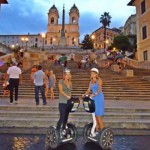
7 Facts about the Spanish Steps
With its irregular butterfly design, the beautiful “Scalina Spagna”, or Spanish Steps are just one of these must see places when in Rome and a great example of Roman Baroque Style… Continue Reading…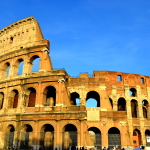
10 Facts About The Colosseum
Rome’s most popular monument was built between 72-80 A.D. The Colosseum is still the largest amphitheater in the world, and stands as an iconic symbol of Rome and the great Roman architecture. Continue Reading…
10 Facts about Julius Caesar
The people of Rome gave him titles, honors and more power than anyone else in their history but who was the man behind? His influence today might be more prevalent than you think. Even the King of Diamonds in the traditional pack of playing cards is meant to represent him. Continue Reading…
10 Facts about Piazza Navona
Dominitian’s ancient stadium, now Rome’s most beautiful Piazza, is adorned with fine Renaissance and Baroque buildings, designed by the most famous architects of the 16C and 17C. The piazza is one of Rome’s liveliest squares, full of tourists, portrait painters, vendors, musicians, mime artists , shops and restaurants… Continue Reading…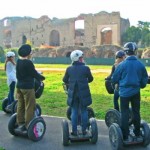
Appian Way, the Queen of Roads
Lately there was quite an interest with our Sunday Appian way Segway Tour, a good enough reason to add some words about the Remarkable yet less visited Via Appia Antica, with its History and Catacombs… Continue Reading…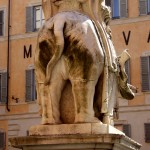
Bernini’s Minerva Chick
Adjacent to the pantheon, in front of the Dominican church “Santa Maria Sopra La Minerva” (St.Mary Over Minerva), lies one of the most curious monuments of Rome, the so called “Pulcino della Minerva”, or in english – Minervas Chick. The brilliantly carved and very realistic … Continue Reading…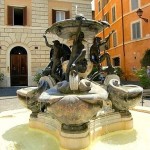
The Turtle Fountain
Many travelers wandering around Rione Sant’Angelo, more commonly referred as the Jewish Ghetto, tend to miss one of the most beautiful fountains in Rome, The small “Fontana delle Tartarughe” or “Fontana Tortoise”, better known as the Turtle Fountain… Continue Reading…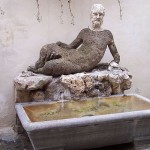
Rome’s ‘Talking’ Baboon Fountain
Er Babuino – The baboon Rome is famous for its marvelous fountains, but there is one that doesn’t shine for beauty, and it is the “Fontana del Babuino” – “The Baboon Fountain”… Continue Reading…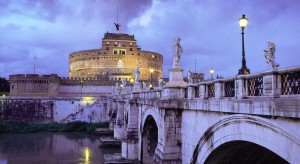

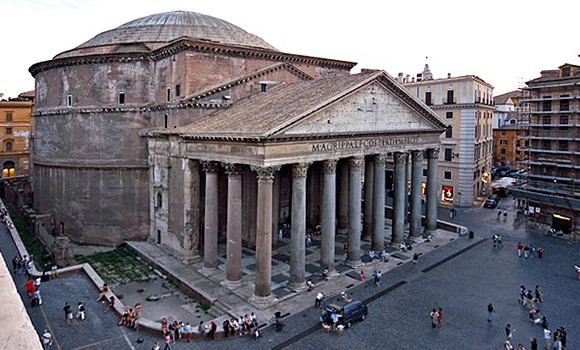
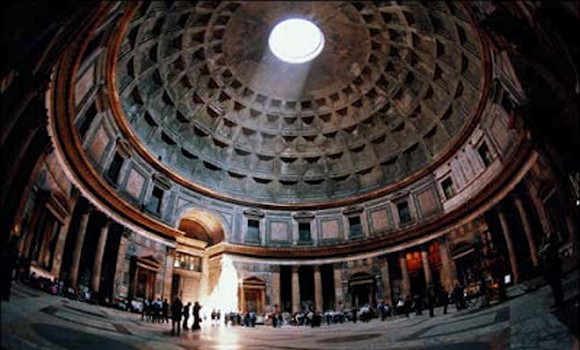



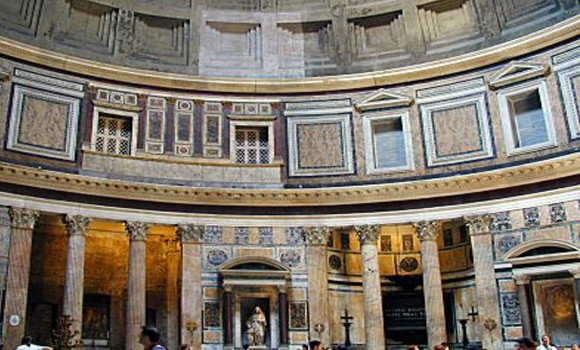


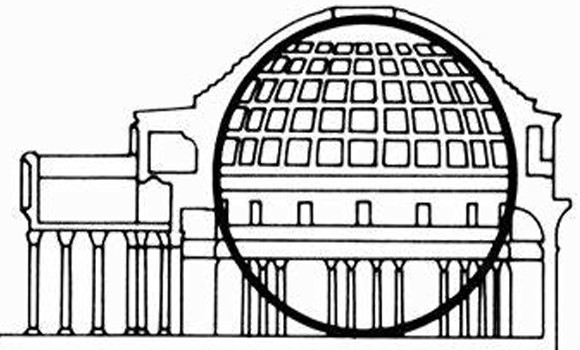
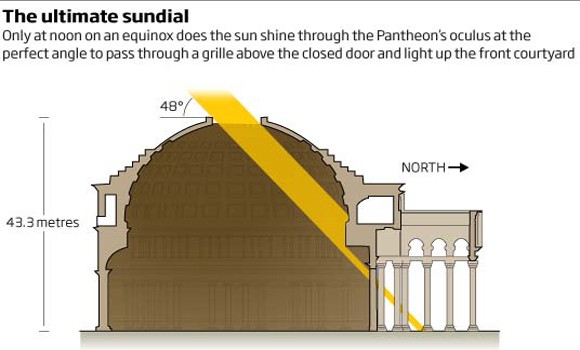












 SEGWAY & GOLF-CART
SEGWAY & GOLF-CART
JJ
| #
cool
Reply
aleiu
| #
this is so helpful:)
Reply
adam
| #
thank you!
Reply
Liam
| #
Thank you so much!
Reply
shauna moran
| #
so helpful and cool and interesting I got an A1 in my history test because this stuff was so helpful so many thank
thank you
Reply
Jacob B
| #
thank you for the info, this really helped me understand the Pantheon more than the Heroes of Olympus books did.
Reply
Geetha Swaminathan
| #
Thank you. These info helped me to make pictures and related information for my Son III std ICSE History project.
Reply
bgsdirt
| #
thank you
Reply
moe
| #
This is great! it helped with my project!
Reply
Moe S.
| #
This is great! it helped with my project! i got a a+ on it
Reply
sarah
| #
this helped me a lot im hoping that i will ace my history project
Reply
Hailee s
| #
This information was very helpful for my group project in my art history Class. Thanks!
Reply
kalo
| #
great day i enjoyed
Reply
Brianna
| #
Great! helped me ace my history class!!!
Reply
Hai
| #
Thx for the info.
Reply
Horacio Hacker
| #
I love this information.
Reply
Taysia
| #
Otherwise very useful, Thanks a million!!!
Reply
Vera
| #
Thanks for the information. We just got home from Rome and I had never read abut the Spanish Steps or the Pantheon. I have visited them both several occasions and loved the beauty of both of them. Very interesting to read! Thanks again.
Reply
May
| #
Thankss a lot, saved me the time and trouble of having to browse through other websites, greatly helped me to save time in my architecture project!
Reply
garold
| #
The obelisk erected on top of the fountain in front of the Pantheon was not carved out as part of the fountain design, it’s an actual Egyptian obelisk one with a fascinating story.
Reply
Uriya
| #
Thank you for commenting! The article doesn’t claim the Obelisk was carved as part of the fountain. on point 9 it says the Obelisk was placed on top of the fountain. like all of Rome’s obelisks the Macuteo has a beautiful story.
Reply
Melanie
| #
Your “ten facts” series is such a fun read! This is my first visit to Rome (we travelled all the way from Barbados to visit your spectacular, iconic ancient city). There is so much history, architecture and sheer beauty, to absorb. It could be overwhelming, but your “ten facts” distill the essence of these fascinating sights in an accessible and entertaining way. Thank you!
Reply
Widdow
| #
this was so helpful for my Roman project at school!!!
Reply
James Bergman
| #
Cool facts. Hearing that the pantheon is made out of something better but similar to concrete definitely gives me pause. I mean, we use concrete for everything. We pump it up into the walls of skyscrapers and use it to build our roads. So, maybe we should take a lesson from the Romans and figure out how they mixed the stuff from the pantheon and make our concrete stronger.
Reply
Faylinn
| #
It is no surprise to me that the Pantheon has survived all of these years.That is because they were experts at making concrete. I mean, did you know that they used ox blood and horse hair in their concrete mixture to ensure that it didn’t crack away and to help preserve it? I’m not sure if that type of mixture was just for their roads or if it was used to build this monument too, though.
Reply
Glenna T
| #
I thank you so much for your effort in writing this post.
Reply
Craig Jacobs
| #
Nothing about the name “Pantheon” means “honor.” Its Greek roots simply mean “all gods.”
Reply
Cutie
| #
Thank you so helpful on my Roman Engineering Project
Reply
James
| #
By many measures still the world’s most impressive building
Reply
Jeff
| #
Hi I am a teacher and these facts are very helpful for my class and Rome is truly amazing thank you so much for this website all the history teacher including me appreciate it
Reply
GIORGOS SPYRIDAKOS
| #
I ve been to Rome last October, amazing city and the Pantheon??? A landmark on its own!
Reply
James
| #
Pantheon was pretty amazing, The Colosseum was was definitely my personal favorite though
Reply
Jackson
| #
THANK FOR THE A +!!!!!!!!
Reply
Uriya
| #
😆 You welcome!
Reply
Stuart
| #
Hi, i am doing a project on the romans and would like to know who (and when) took the first picture of the pantheon (just under fact 3) so that i can reference it in my project please? thanks
Reply
Uriya
| #
Hi Stuart, You can follow this link
Reply
Cameron
| #
Thanks so much for this im doing a socail studies project on the pantheon and this really helped!
Reply
Maria Tyner
| #
After several days in Rome, seeing the Pantheon in person on our last night, struck me and gave me chills as if I had seen it before in a dream yet I had no knowledge of its significance or history. Thank you for quickly filling in the banks adding context and confirming what I felt in my heart in spite of my ignorance. This is truly one of my favorite sites I’ve ever seen! Incredible!!
Reply
Ellen
| #
Thanks this really helped
Reply
Candice
| #
thanks for the info
Reply